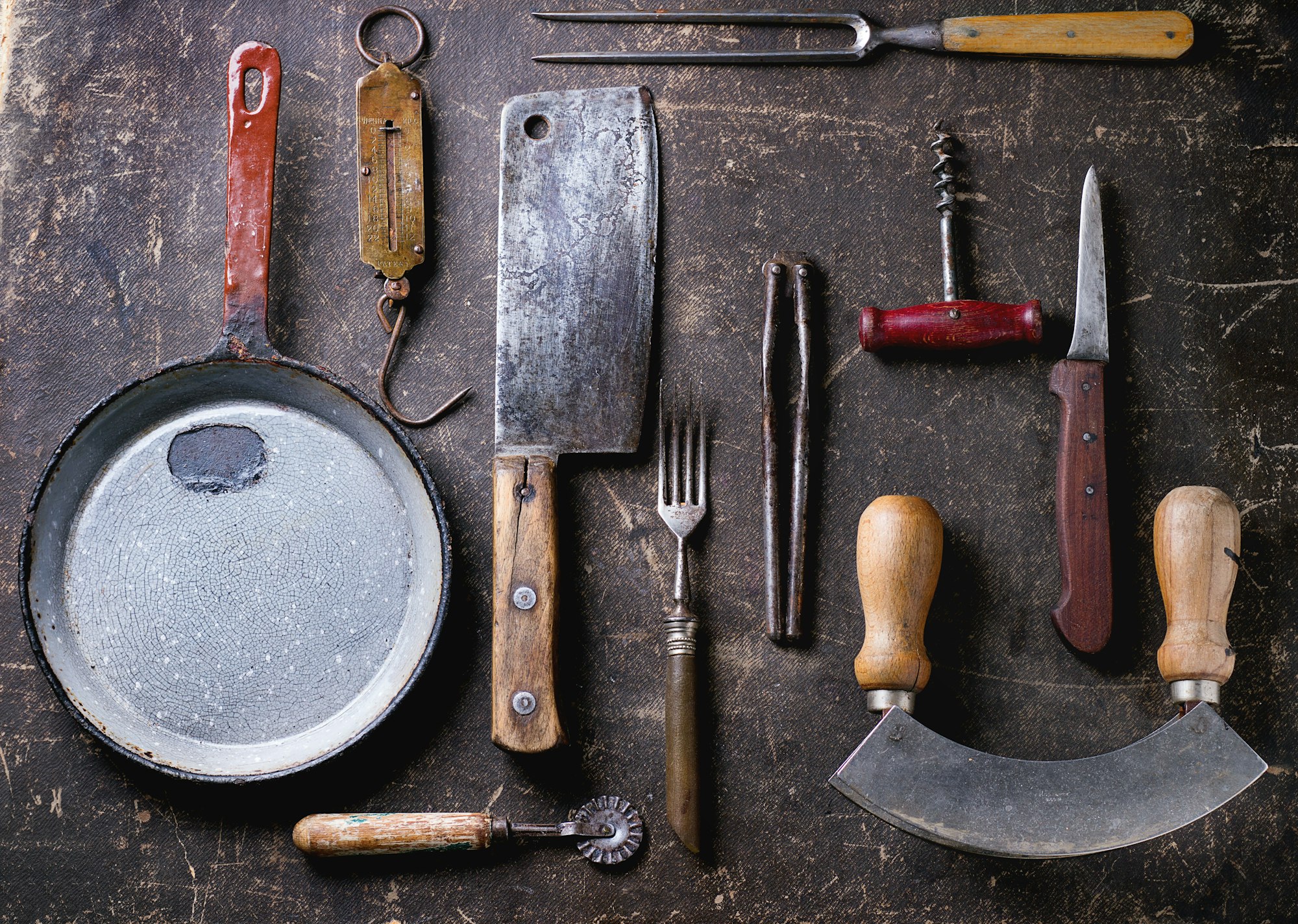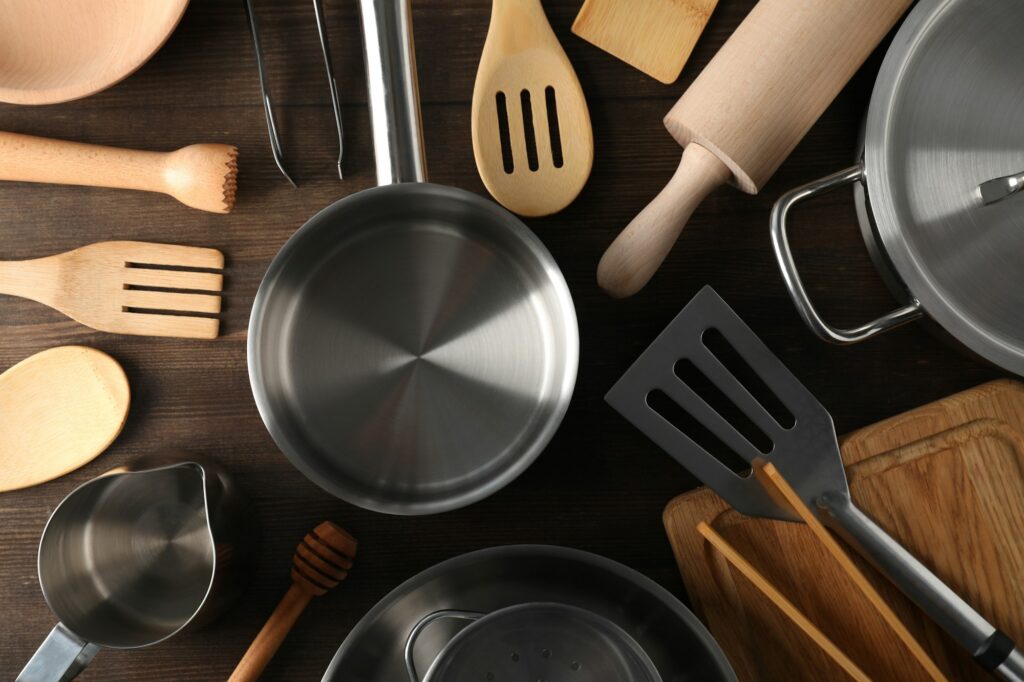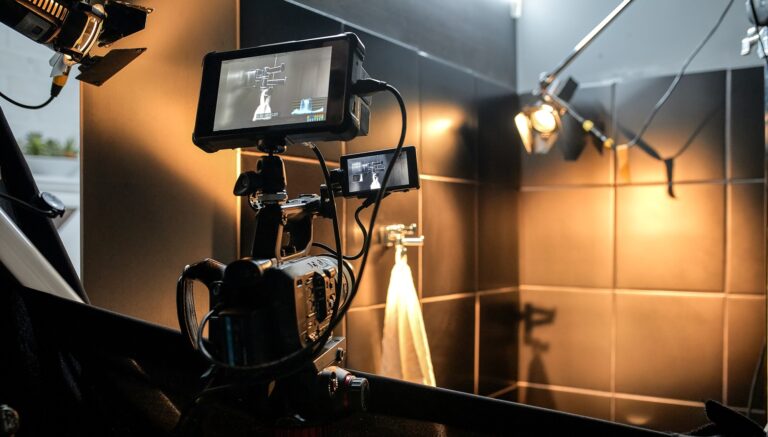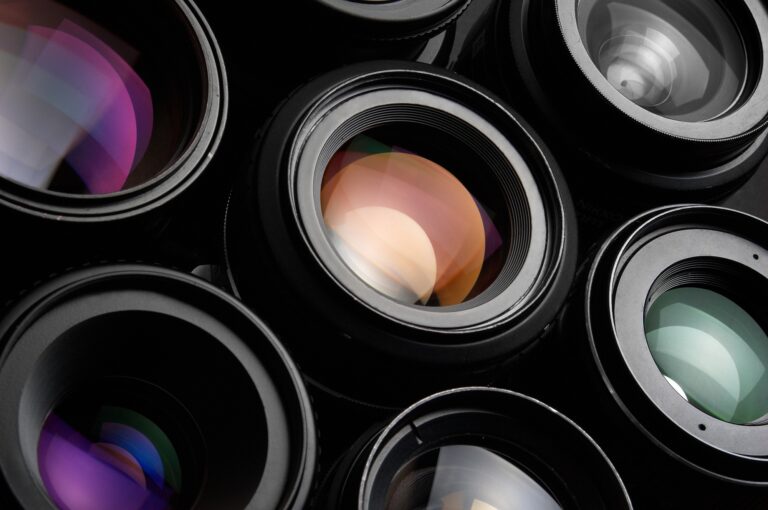The Power of Cookware Marketing
In the bustling world of culinary arts, cookware marketing has emerged as a pivotal element in influencing consumer choices. The cookware industry, valued at over $10 billion globally, is fiercely competitive, with brands vying for the attention of both amateur cooks and professional chefs. Effective marketing strategies can make or break a brand, and in this digital age, the power of visual content cannot be overstated.
Cookware marketing is not just about showcasing pots and pans; it’s about creating an emotional connection with the audience. It’s about telling a story that resonates with the viewer, making them feel that they need that particular piece of cookware to recreate the magic in their own kitchen. According to a study by HubSpot, 54% of consumers want to see more video content from brands they support, highlighting the importance of integrating video into marketing strategies.
In this article, we will delve into the transformative power of cooking videos in cookware marketing. We will explore why these videos are a game-changer, how to understand and engage your audience, and the art of storytelling in cooking videos. We will also discuss leveraging social media platforms, collaborating with influencers, measuring success, and avoiding common pitfalls. Through case studies of brands that have nailed it, we will illustrate the potential of cooking videos to revolutionize cookware marketing.
Why Cooking Videos Are a Game-Changer
Cooking videos have revolutionized the way cookware is marketed, offering a dynamic and engaging medium to showcase products. Unlike static images or text descriptions, videos provide a multi-sensory experience that can captivate viewers and hold their attention. According to Wyzowl, 84% of people say that they’ve been convinced to buy a product or service by watching a brand’s video. This statistic underscores the persuasive power of video content in driving consumer behavior.
One of the key advantages of cooking videos is their ability to demonstrate the functionality and versatility of cookware in real-time. Viewers can see how a pan heats evenly, how a pot retains moisture, or how a knife slices through ingredients with ease. This visual demonstration can build trust and credibility, making viewers more likely to invest in the product. Moreover, cooking videos can highlight the unique features and benefits of the cookware, setting it apart from competitors.
Furthermore, cooking videos can evoke emotions and create a sense of aspiration. By showcasing delicious recipes and beautiful presentations, these videos can inspire viewers to try new dishes and elevate their cooking skills. This emotional connection can be a powerful motivator, driving viewers to purchase the cookware to recreate the experience in their own kitchens. As a result, cooking videos can significantly enhance brand loyalty and customer engagement.
Understanding Your Audience: Who Are You Cooking For?
To maximize the impact of cooking videos, it is crucial to understand your target audience. Knowing who you are cooking for can help tailor your content to meet their preferences and needs. Start by identifying the demographics of your audience, such as age, gender, location, and income level. This information can provide valuable insights into their cooking habits, preferences, and purchasing behavior.
For instance, millennials and Gen Z consumers are more likely to seek out quick and easy recipes that fit into their busy lifestyles. They may also be more inclined to try new and trendy ingredients or cooking techniques. On the other hand, older generations may prefer traditional recipes and cookware that offer durability and reliability. By understanding these preferences, you can create content that resonates with your audience and addresses their specific needs.
In addition to demographics, consider the psychographics of your audience, such as their interests, values, and motivations. Are they health-conscious individuals looking for nutritious recipes? Are they food enthusiasts who enjoy experimenting with gourmet dishes? Or are they budget-conscious consumers seeking affordable and practical cookware? By understanding these factors, you can craft content that speaks to their interests and aspirations, making your cookware more appealing and relevant.
Crafting the Perfect Recipe for Engagement
Creating engaging cooking videos requires a blend of creativity, technical skills, and a deep understanding of your audience. The first step is to develop a compelling concept that captures the viewer’s attention. This could be a unique recipe, a cooking challenge, or a behind-the-scenes look at the culinary process. The key is to offer something that is both entertaining and informative, providing value to the viewer.
Once you have a concept, focus on the production quality of your video. High-quality visuals and clear audio are essential for creating a professional and polished look. Invest in good lighting, a quality camera, and a reliable microphone to ensure that your video looks and sounds great. Additionally, consider using multiple camera angles to provide different perspectives and keep the viewer engaged.
Another important aspect of crafting engaging cooking videos is storytelling. A well-told story can captivate the viewer and create an emotional connection with the brand. Start with a strong introduction that grabs the viewer’s attention and sets the stage for the recipe. Use descriptive language and vivid imagery to bring the cooking process to life, and include personal anecdotes or tips to add a personal touch. Finally, end with a satisfying conclusion that leaves the viewer feeling inspired and motivated to try the recipe themselves.

Showcasing Your Cookware: Tips and Tricks
When it comes to showcasing your cookware in cooking videos, the goal is to highlight its features and benefits in a way that feels natural and authentic. One effective strategy is to integrate the cookware seamlessly into the cooking process. Instead of simply showing the product, demonstrate how it enhances the cooking experience. For example, you could highlight how a non-stick pan makes flipping pancakes effortless or how a cast-iron skillet retains heat for perfectly seared steaks.
Another tip is to focus on the unique selling points of your cookware. What sets it apart from other products on the market? Is it made from high-quality materials? Does it have innovative features? Is it eco-friendly? By emphasizing these unique attributes, you can create a compelling case for why viewers should choose your cookware over competitors. Use close-up shots and slow-motion footage to showcase these features in detail and make them stand out.
In addition to demonstrating the functionality of your cookware, consider incorporating lifestyle elements into your videos. Show how your cookware fits into different cooking styles and occasions, from everyday meals to special celebrations. Highlight the versatility of your products by featuring a variety of recipes, from simple weeknight dinners to elaborate gourmet dishes. By presenting your cookware as an essential tool for creating memorable culinary experiences, you can make it more appealing to a wide range of viewers.
The Art of Storytelling in Cooking Videos
Storytelling is a powerful tool in cooking videos, as it can create an emotional connection with the viewer and make the content more memorable. A well-crafted story can transport the viewer into the world of the chef, making them feel like they are part of the cooking journey. This emotional engagement can drive viewers to take action, whether it’s trying the recipe, sharing the video, or purchasing the cookware.
To tell a compelling story, start by identifying the key message or theme of your video. What do you want the viewer to take away from the experience? This could be a lesson about cooking techniques, an inspiring story about the origins of a recipe, or a celebration of culinary creativity. Once you have a clear message, build your story around it, using visuals, narration, and music to enhance the emotional impact.
Another important aspect of storytelling is authenticity. Viewers are more likely to connect with content that feels genuine and relatable. Share personal anecdotes, behind-the-scenes moments, and candid insights to create a sense of intimacy and trust. Show the human side of cooking, with its triumphs and challenges, to make the story more relatable and engaging. By being authentic and transparent, you can build a loyal and engaged audience that feels a genuine connection to your brand.
Leveraging Social Media Platforms for Maximum Reach
Social media platforms offer a powerful way to reach a wide audience and amplify the impact of your cooking videos. Each platform has its own unique features and audience demographics, so it’s important to tailor your content to fit the platform. For example, Instagram and TikTok are ideal for short, visually appealing videos that capture attention quickly, while YouTube is better suited for longer, more detailed content.
To maximize your reach on social media, start by optimizing your video for each platform. This includes using the appropriate video format, resolution, and aspect ratio, as well as adding captions and subtitles for accessibility. Use eye-catching thumbnails and compelling titles to attract viewers, and include relevant hashtags and keywords to increase discoverability. Additionally, consider using paid advertising to boost your video’s visibility and reach a larger audience.
Engagement is key to building a loyal following on social media. Encourage viewers to like, comment, and share your videos, and respond to their comments and questions to create a sense of community. Use interactive features like polls, quizzes, and live streams to engage with your audience in real-time and make them feel involved in the cooking process. By fostering a sense of connection and interaction, you can build a loyal and engaged audience that is more likely to support your brand.
Collaborating with Influencers and Chefs
Collaborating with influencers and chefs can be a highly effective way to enhance the credibility and reach of your cooking videos. Influencers and chefs have established followings and can lend their expertise and authority to your brand. By partnering with them, you can tap into their audience and gain exposure to new potential customers.
When choosing influencers and chefs to collaborate with, look for individuals who align with your brand values and target audience. Consider their reach, engagement rates, and the quality of their content. Reach out to them with a personalized pitch that highlights the benefits of the collaboration and how it aligns with their interests and goals. Offer them creative freedom to showcase your cookware in a way that feels authentic and natural to their style.
Collaborations can take many forms, from sponsored posts and product reviews to co-branded content and cooking challenges. For example, you could partner with a chef to create a series of cooking videos featuring your cookware, or collaborate with an influencer to host a cooking contest using your products. By leveraging the influence and expertise of these individuals, you can enhance the credibility and appeal of your brand and reach a wider audience.
Measuring Success: Key Metrics to Track
To evaluate the effectiveness of your cooking videos, it’s important to track key metrics that provide insights into their performance. These metrics can help you understand what is working well and identify areas for improvement. Some of the key metrics to track include views, engagement rates, click-through rates, and conversion rates.
Views are a basic measure of how many people have watched your video. While high view counts can indicate popularity, it’s important to look beyond this metric to understand the true impact of your content. Engagement rates, such as likes, comments, and shares, provide a better indication of how well your video is resonating with viewers. High engagement rates suggest that viewers are finding your content valuable and are more likely to take action.
Click-through rates (CTR) measure how many viewers clicked on a link or call-to-action in your video. This metric can help you understand how effective your video is at driving traffic to your website or landing page. Conversion rates measure how many viewers took a desired action, such as making a purchase or signing up for a newsletter. By tracking these metrics, you can gain valuable insights into the effectiveness of your cooking videos and make data-driven decisions to optimize your content.
Common Pitfalls and How to Avoid Them
While cooking videos can be a powerful marketing tool, there are common pitfalls that can undermine their effectiveness. One common mistake is focusing too much on the product and not enough on the content. While it’s important to showcase your cookware, the primary focus should be on providing value to the viewer. Avoid making your video feel like a commercial by creating content that is entertaining, informative, and engaging.
Another pitfall is neglecting the production quality of your video. Poor lighting, shaky camera work, and unclear audio can detract from the viewer’s experience and make your brand appear unprofessional. Invest in good equipment and take the time to plan and execute your video with care. Pay attention to details like framing, composition, and editing to create a polished and professional look.
Finally, avoid being too rigid or scripted in your presentation. Authenticity is key to building trust and connection with your audience. Be yourself and let your personality shine through in your videos. Share personal stories, be candid about your experiences, and don’t be afraid to show your imperfections. By being genuine and relatable, you can create a stronger emotional connection with your viewers and build a loyal following.
Case Studies: Brands That Nailed It
Several brands have successfully leveraged cooking videos to enhance their cookware marketing and achieve impressive results. One notable example is Tasty, the popular food network owned by BuzzFeed. Tasty’s short, visually appealing cooking videos have garnered millions of views and have become a staple on social media platforms like Facebook and Instagram. By focusing on quick and easy recipes that appeal to a wide audience, Tasty has built a massive following and established itself as a leading authority in the culinary world.
Another successful case study is Le Creuset, the premium cookware brand known for its colorful cast-iron pots and pans. Le Creuset has effectively used cooking videos to showcase the versatility and durability of its products. By partnering with renowned chefs and influencers, Le Creuset has created high-quality content that highlights the unique features of its cookware and inspires viewers to try new recipes. This strategy has helped Le Creuset build a loyal customer base and maintain its position as a premium brand in the market.
A third example is Blue Apron, the meal kit delivery service that provides pre-portioned ingredients and recipes for home-cooked meals. Blue Apron has used cooking videos to demonstrate how easy and convenient it is to prepare its meals. By featuring real customers and chefs in its videos, Blue Apron has created authentic and relatable content that resonates with its target audience. This approach has helped Blue Apron build trust and credibility, driving customer engagement and retention.
Conclusion: Cooking Up a Storm in Cookware Marketing
In conclusion, cooking videos offer a powerful and engaging way to market cookware and connect with consumers. By understanding your audience, crafting compelling content, and leveraging social media platforms, you can maximize the impact of your cooking videos and drive customer engagement. Collaborating with influencers and chefs can enhance the credibility and reach of your content, while tracking key metrics can help you measure success and optimize your strategy.
Avoiding common pitfalls and focusing on authenticity and production quality can further enhance the effectiveness of your cooking videos. By learning from successful brands and applying these best practices, you can create cooking videos that not only showcase your cookware but also inspire and engage your audience.
Ready to take your cookware marketing to the next level? Contact us today to learn how our video production services can help you create high-quality cooking videos that captivate and convert. Let’s cook up a storm together!





